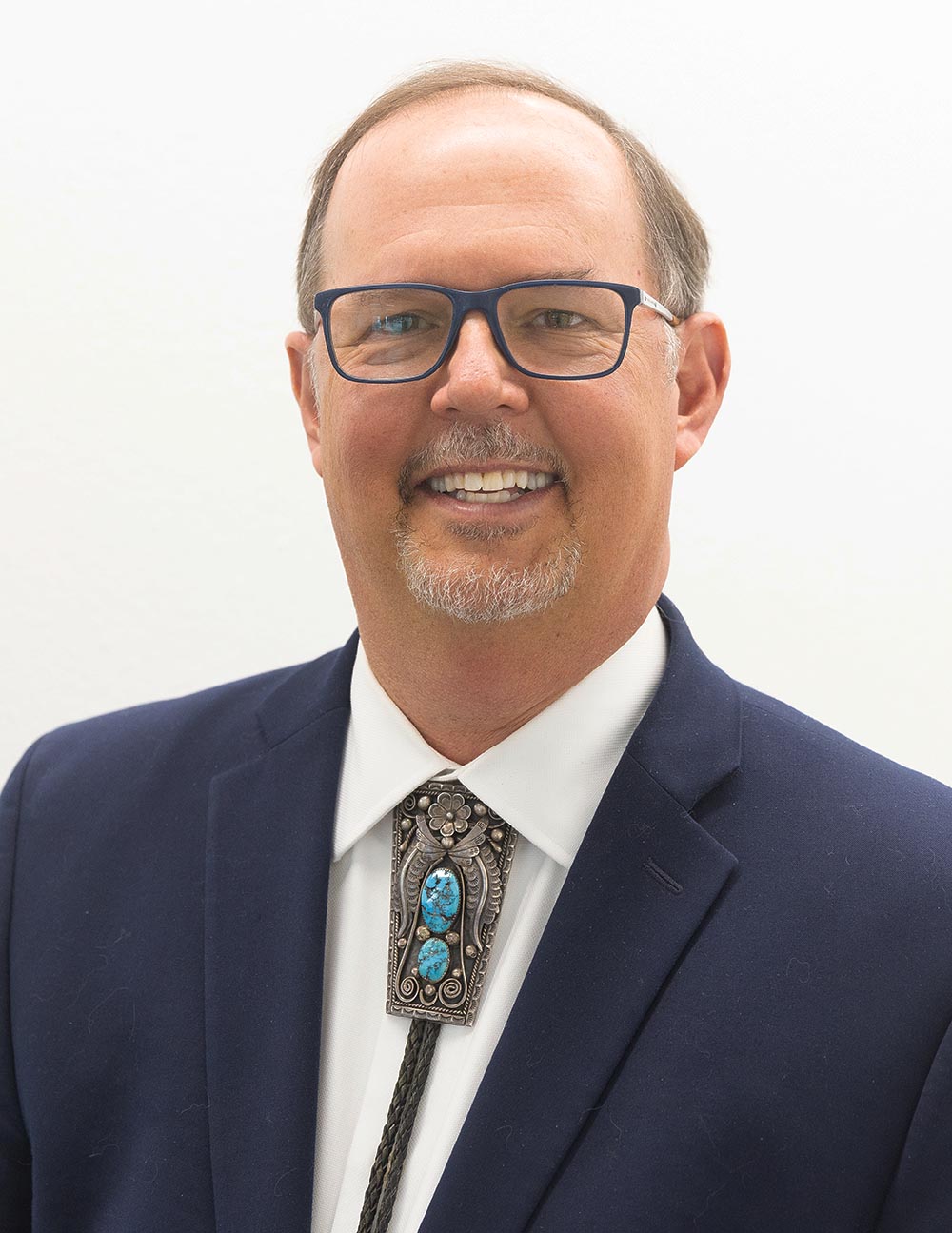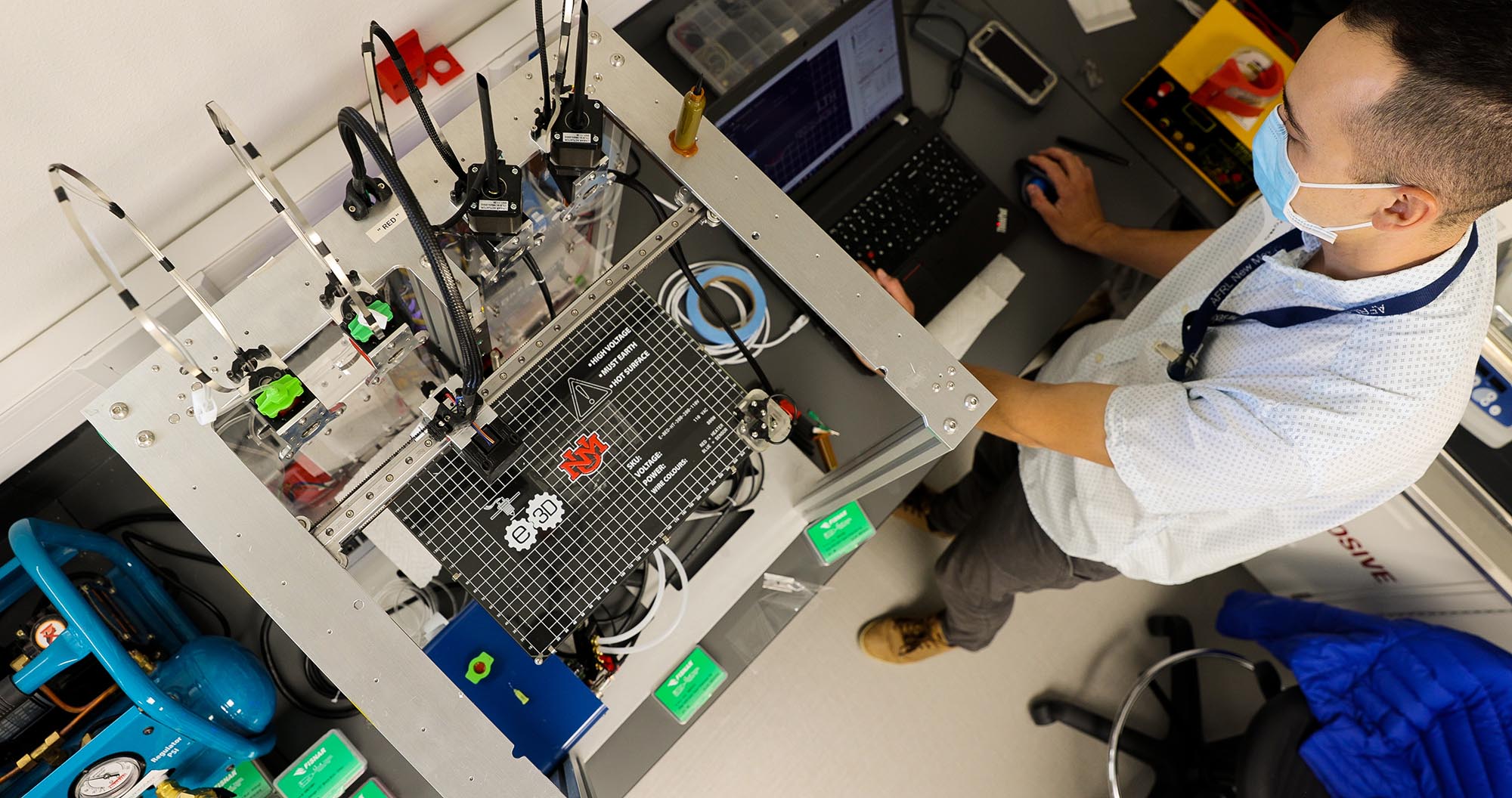Health care industry experts, researchers, entrepreneurs and investors were recently offered a behind-the-scenes look into some of the latest innovations and technology work at The University of New Mexico Health Sciences Center of Excellence for Orthopaedic Surgery & Rehabilitation (COE).
The Oct. 13 Orthopaedic Technology and Facility Showcase was split into two segments. The first half featured orthopedics-focused technology presentations, as well as information on the COE’s opportunities and resources.

There aren’t many academic health centers in the nation that are as strong as we are in research, community engagement and working in rural areas. We had our best year in research this year and it keeps going up
“There aren’t many academic health centers in the nation that are as strong as we are in research, community engagement and working in rural areas,” said Douglas Ziedonis, MD, MPH, executive vice president for Health Sciences and CEO of the UNM Health System. “We had our best year in research this year and it keeps going up.”
Christina Salas, PhD, MSc, led a presentation on the COE’s Orthopaedic Biomechanics & Biomaterials Laboratory, which has a dedicated on-site machine shop. The large shop houses a variety of tools and equipment, including different types of 3D printers, lathes, drill presses, etc.
“It enables us to do supportive work, not only for orthopedics, but for basically anybody at UNM Health Sciences, and even the UNM School of Engineering,” said Salas, an associate professor in the Department of Orthopaedics & Rehabilitation with a co-appointment in the School of Engineering.
Using these resources, Salas and her team can create anatomical models for pre-surgical planning, research and medical device development.
“We have software that can take things like MRIs and CT scans, and convert them to three-dimensional models, which we can then 3D-print on our printers,” she said. “We’re currently doing a research study essentially trying to determine if 3D models can be used for resident training of complex acetabular fractures, and whether that is more helpful than, say, a two-dimensional image on a screen.”
After Salas’ presentation, several UNM students and faculty members presented their orthopedics-related research and projects.
Rebekah Gridley and Elias Rosales-Zaragoza, members of a team of UNM physical therapy students, engineering students and recent graduates, described the prototype of the Lower-Extremity Guided and Assisted Rehabilitation Device (LEGARD), which is designed to improve hip strength and range of motion following hip surgery. Salas is the principal investigator for that project.
The LEGARD consists of two railings for balance, a sliding ramp with resistance functioning and a sensor function to ensure range of motion goals are being met.
The prototype was conceptualized and designed, Gridley said, because there are many barriers to receiving adequate post-surgical rehabilitative care, and this device could potentially create an alternative care plan in a patient’s home.
“There’s an emerging relevance of in-home based rehab care and the importance of expanding research to improve in-home practices, as well as innovation to make the in-home rehab experience a bit easier on the patient,” she said.
The showcase, which was co-sponsored by the COE and UNM Rainforest Innovations, also highlighted how far the Department of Orthopaedics & Rehabilitation has come.
When Salas was first hired as a research assistant more than 15 years ago, there were only two 275-square-foot rooms on the UNM Health Sciences campus dedicated to biomechanics and biomaterials laboratories.
“One room was our gross anatomy lab, and it literally had one cadaver that was used for resident education purposes,” Salas said. “The residents would all kind of pack in there to do any pre-surgical planning or do any educational events that they had going on.”
Going from fewer than 600 square feet to about 10,000 square feet of biomechanics and biomaterials laboratory space housed within the COE was a huge improvement, she said.
“We’ve always had a lot of really great research coming out of the University, but we’ve often done so with limited resources,” she said. “I’m very excited about the space we have here today.”
The $21 million building, which opened in December 2021 adjacent to UNM Sandoval Regional Medical Center, was partially funded through Rio Rancho’s Higher Education Gross Receipts Tax revenues, with other funds coming from cash on hand and $15 million from bonds raised against future tax receipts. The COE was designed to combine education, research and clinical work under one roof.
“This building for the community is an area where you can get treated, your children can learn and become medical providers, and where we can make amazing discoveries to make life better for the world and in health and musculoskeletal care,” said orthopedic surgeon Robert C. Schenck, Jr., MD, chair of Orthopaedics & Rehabilitation. “This building is an important part of the city of Rio Rancho’s vision.”
The last leg of the event was an Orthopaedic Innovation Champions Round Table, where people interested in orthopaedic innovation were invited to a round table discussion of how design thinking tools can help translate ideas and research into solutions for clinical practice.
“When we were planning for this space, we expected that if you brought lifelong learners into the same space together, they would begin to collaborate and solve real problems in the clinical world,” said COE administrator Hillary Hoekenga. “We’ve seen that happen consistently.”

